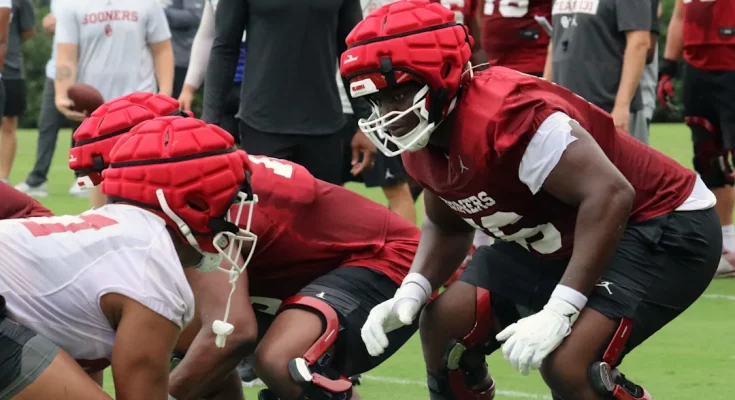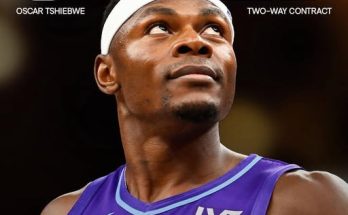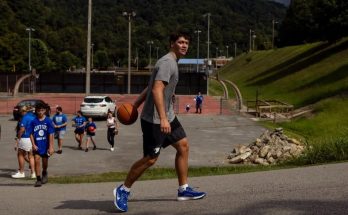The Oklahoma Sooners are preparing to enter another season filled with high expectations, intense scrutiny, and the never-ending pressure that comes with being one of the most storied programs in college football. With Brent Venables continuing to shape the program under his leadership and the team transitioning toward an SEC future, the stakes for each player on the roster could not be higher. One of the most fascinating aspects of Oklahoma’s preparation is the number of position battles that remain unresolved, even as the season draws near. These competitions will not only determine who starts but also how the Sooners ultimately perform across different phases of the game. Unlike some programs where depth charts are more or less settled by the end of fall camp, Oklahoma’s coaching staff has made it clear that many jobs are still up for grabs, and several position battles are likely to spill over into the season itself. This is a reality of modern college football where depth, transfers, and constant roster movement mean that competition is more intense than ever. For Oklahoma, these battles are not merely footnotes; they will be decisive in shaping whether this team can live up to the lofty expectations of their fans and compete at the highest level in a new conference environment.
One of the most significant battles to watch is at quarterback. While Oklahoma has always been known for producing elite signal-callers, from Baker Mayfield to Kyler Murray to Jalen Hurts, the position today carries unique intrigue. Jackson Arnold, the highly touted young quarterback, has shown flashes of brilliance, but the staff is not yet ready to crown him as the long-term starter without seeing him fully prove himself in game situations. The Sooners know that quarterback stability will dictate the rhythm of their offense, and Arnold has had to fend off competition from veterans who bring both experience and maturity to the position. The fact that the staff has not firmly closed the book on the competition suggests that every snap in the early weeks of the season will be a form of evaluation, with performance dictating future playing time. This ongoing battle could influence the offensive identity of Oklahoma, determining whether they lean more on explosive playmaking or a safer, methodical style of play.
Another critical area of competition lies in the offensive line. For years, the Sooners were known for producing dominant offensive linemen who moved seamlessly to the NFL, giving the program a reputation as “O-Line U.” That pipeline has slowed slightly in recent years, and Venables and his staff know that re-establishing dominance in the trenches is essential. Yet, questions remain over who exactly will anchor the line this year. There is fierce competition at tackle and guard, with younger players pushing veterans and transfers adding another layer of complexity. Continuity on the offensive line is often more important than individual talent, and until Oklahoma settles on a consistent unit, it is likely that rotations will continue into the first few games. That could mean different combinations being tested against live competition, an approach that is both risky and potentially rewarding if it ultimately produces the right mix. The outcome of these battles will determine whether the Sooners can control the line of scrimmage in SEC-style games where physicality and toughness separate the contenders from the pretenders.
The running back room is another area where clarity has yet to emerge. Historically, Oklahoma has always had a stable of backs capable of taking over games, and this season’s group is no exception. The problem—or rather the luxury—is that multiple players have shown they can be the lead back. The coaching staff has made it clear that they will not hesitate to use a committee approach if no clear leader emerges, but there is also the acknowledgment that a feature back can give the offense rhythm and identity. Players like Gavin Sawchuk and Jovantae Barnes have demonstrated their talent, but health, consistency, and the ability to pass protect will determine who actually takes the majority of snaps. Because of this, fans should expect the running back battle to extend well beyond the opener, with real game performances being the deciding factor. In some ways, this competition will be judged not just by carries and yards but by reliability—who can stay on the field in crucial third-down situations, who can pick up blitzes, and who can avoid costly mistakes. These little details may ultimately separate one back from another and establish a true leader in the backfield.
Defensively, the linebacker position stands out as one of the most heated battles that will continue into the season. Brent Venables, known for his defensive expertise, has always emphasized the importance of linebacker play as the heart of his schemes. Oklahoma has no shortage of options here, with veterans and talented newcomers alike competing for playing time. Yet, the competition has been so fierce that no single player has definitively locked down a starting role across the board. Some players bring physicality, others bring speed and coverage ability, and the coaching staff is tasked with finding the right balance for different situations. This could mean a heavy rotation early in the season as Venables looks for the right combination. Linebacker play is especially crucial as the Sooners prepare for SEC competition where stopping power running games and defending versatile tight ends are weekly challenges. Until one or two players truly separate themselves, the rotation will continue, and this battle will be one of the defining storylines of Oklahoma’s defense.
In the secondary, specifically at cornerback, Oklahoma also faces unresolved questions. The transfer portal has brought in new talent, and returning players are determined not to lose their spots. The modern game demands corners who can excel in both man coverage and zone schemes while also contributing in run support, and Oklahoma’s defensive staff has not been shy about rotating players to see who rises to the challenge. The early season will serve as a proving ground, with each cornerback’s performance under the spotlight. Giving up big plays or penalties could quickly lead to a change in who is on the field, making every rep in practice and every snap in games critical. The Sooners understand that in the SEC, elite cornerback play can be the difference between winning and losing close games, especially given the wide receiver talent they will face on a weekly basis. Until a pair of reliable starters emerge, the battle will continue, and this uncertainty could either be a strength—by keeping players hungry and competitive—or a weakness if it leads to instability in coverage.
The common theme in all of these position battles is that Oklahoma has talent but is still searching for consistency and leadership. This is not necessarily a bad thing; depth and competition are hallmarks of elite programs. Yet, there is no denying that unresolved battles can create uncertainty, and fans will be watching closely to see how Venables and his staff manage these situations. The first few games of the season will essentially serve as an extension of training camp, with live game performance serving as the ultimate audition. In many ways, this approach reflects the new reality of college football, where roster turnover from transfers, early NFL departures, and new recruiting classes means that depth charts are more fluid than ever before. For Oklahoma, this fluidity is both an opportunity and a challenge. If handled correctly, it could sharpen the team into a battle-ready unit by midseason. If handled poorly, it could create confusion and inconsistency that undermines the team’s chances of reaching its potential.
What makes these battles particularly fascinating is that they are not isolated competitions but interconnected parts of the whole team dynamic. The quarterback battle influences how the offensive line is evaluated since protection and timing become more important. The running back battle intersects with the quarterback competition, as the presence of a strong run game can ease pressure on a developing signal-caller. On defense, the linebacker and cornerback battles are linked by the need for communication and cohesion in coverage and run defense. The coaching staff’s ability to see these battles not just as individual contests but as pieces of a larger puzzle will be decisive. It is not simply about who is the most talented at a position but who fits best into the team’s system, identity, and chemistry.



